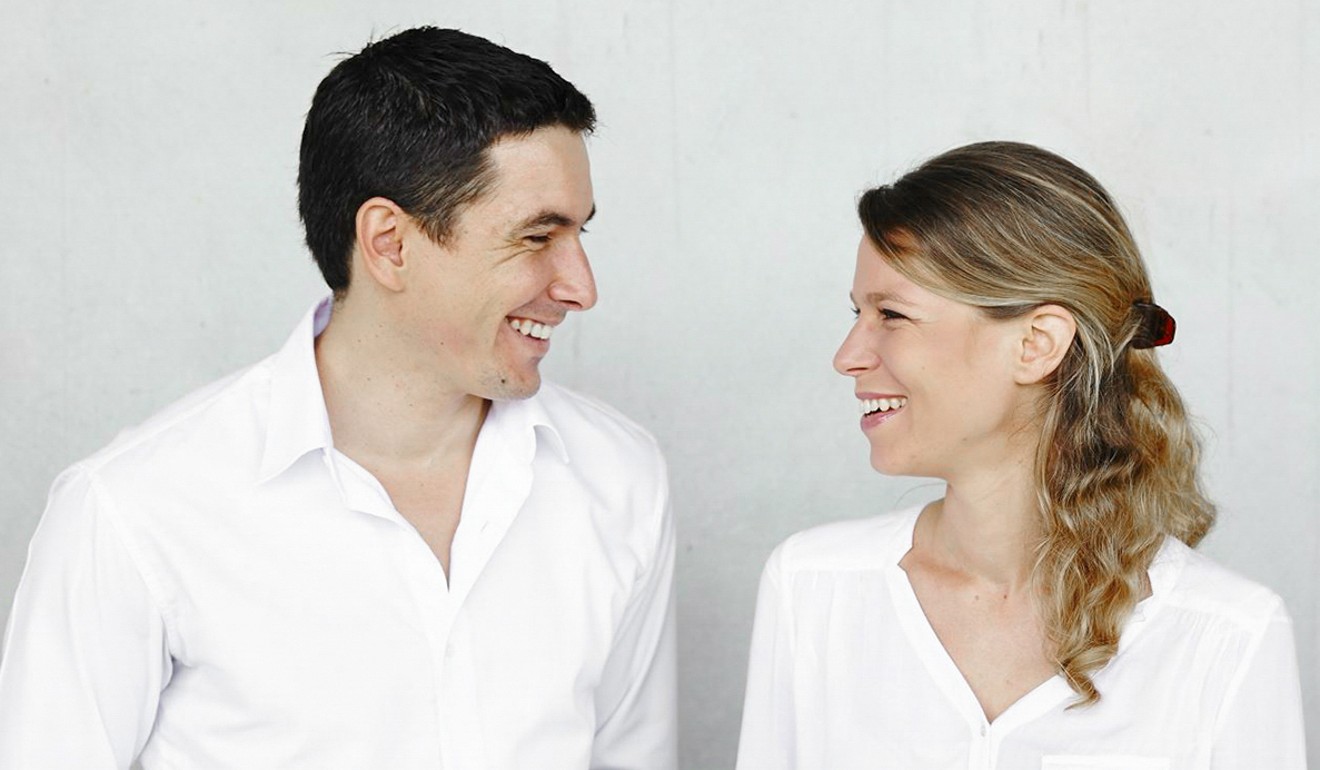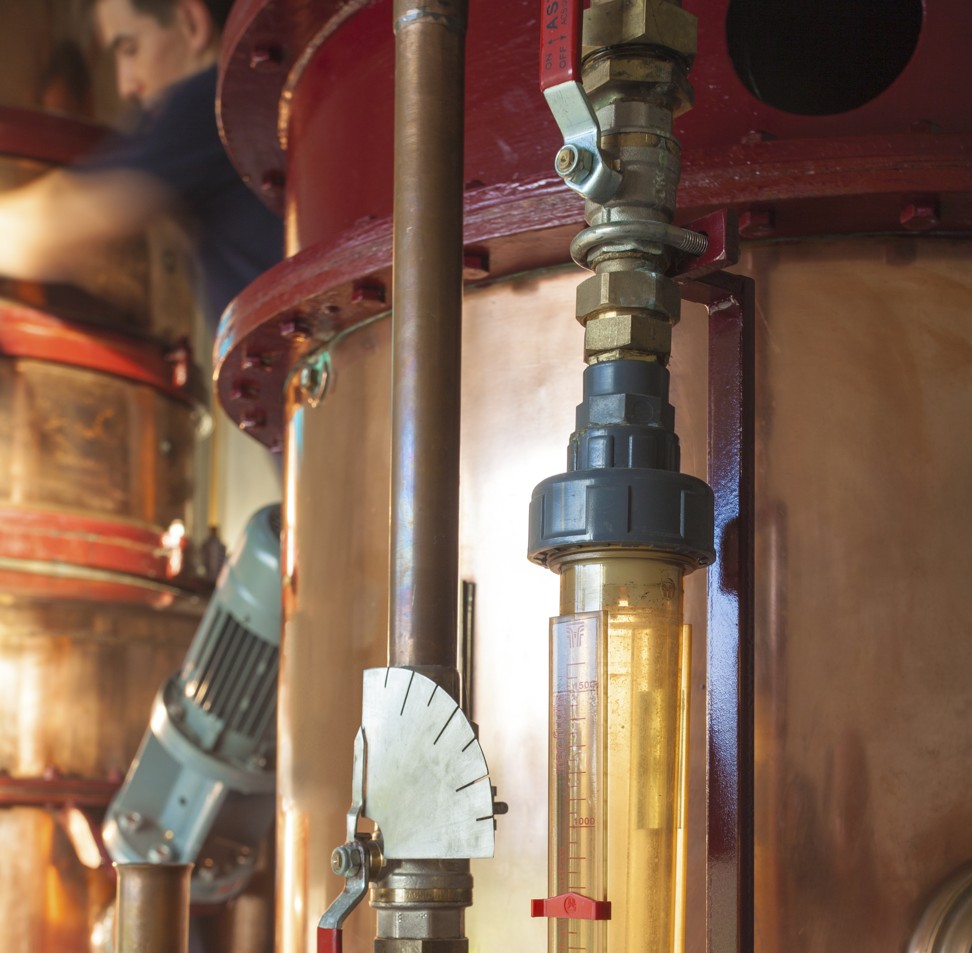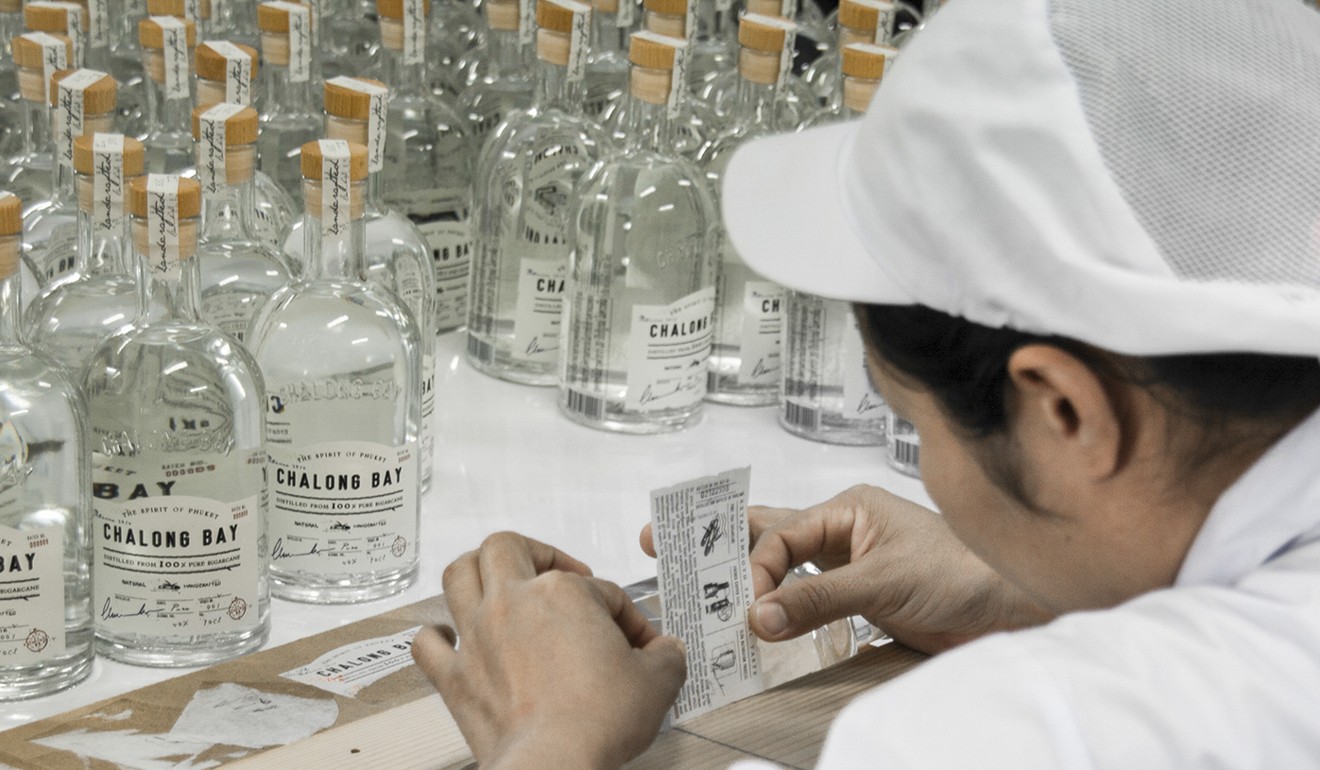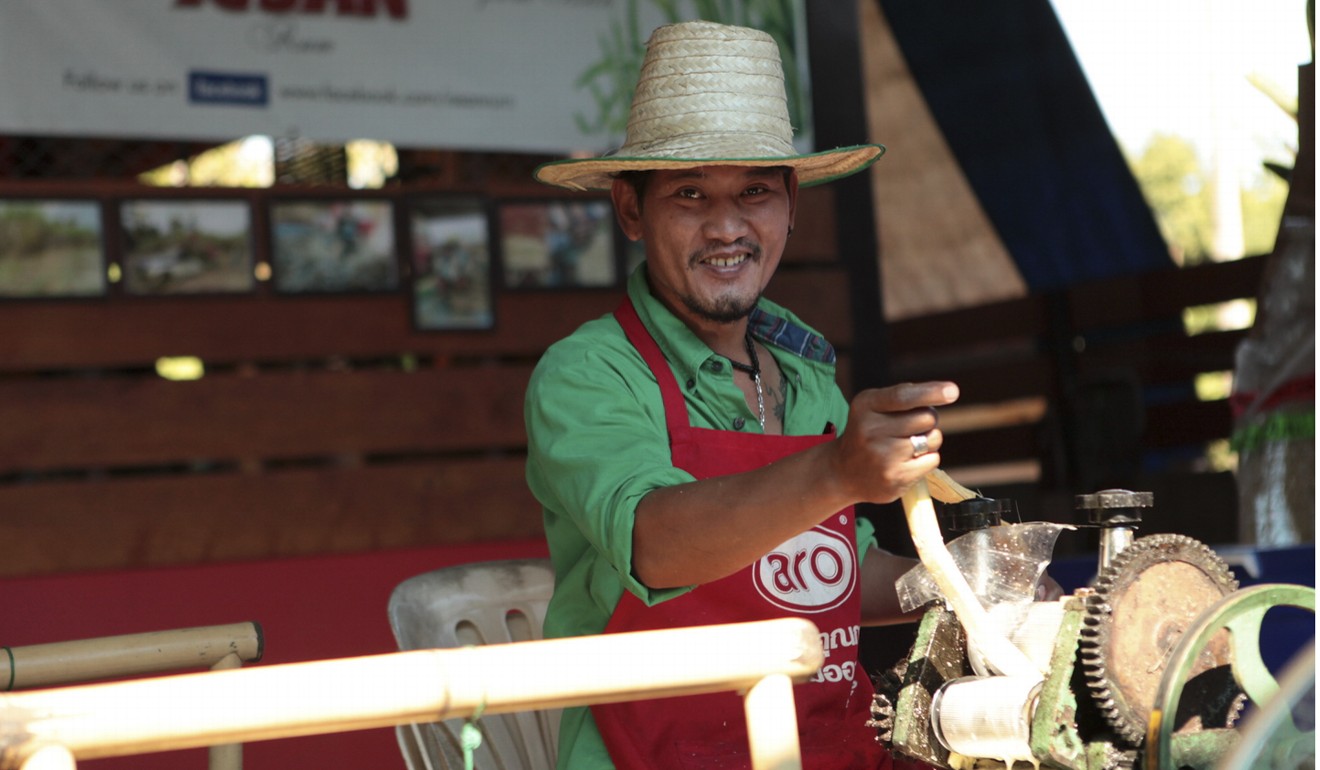
Thailand’s boutique rums leave global industry wanting more thanks to pure sugar cane juice
Rum’s root ingredient, sugar cane, is native to Southeast Asia. A new wave of producers are making the most of its abundance in Thailand, as they break away from mass-produced methods of making the spirit
Chalong Bay Rum distillery offers a lesson in Phuket flavours. Trays of cinnamon, limes and holy basil are about to be infused into the island’s award-winning rum. Bulbous glass bottles, each numbered by hand, await distribution to France, Australia and Hong Kong.
Distillery owners Marine Lucchini and Thibault Spithakis, now both 31 years old, started the business aged 25. “We were working in finance in Paris and thought, ‘Why wait until we are 40? If we start the distillery now, we [will] have a head start’.”

The idea of opening a boutique rum distillery on a tropical Asian island is strangely sensible. Rum’s root ingredient, sugar cane, is native to Southeast Asia, and Thailand is now the fourth-largest producer in the world. By the 8th century, Arabian traders had carted the crop from Phuket to the Mediterranean. It was carried to the Caribbean by Christopher Columbus himself.
“The first rums were made in the Caribbean on French islands like Martinique and Guadeloupe but sugar cane is native to Southeast Asia,” says the Frenchmen. “All we had to do was bring the two cultures together.”
King cobras in Thailand: why some villagers worship the snake and others drink its blood
Rum fans from around the world have taken the Chalong Bay factory tour. Its most striking feature is the vast copper still. It was made in Armagnac in southern France in 1973 and was formerly used to make brandy. “We bought it when the brandy distillery was closing down,” explains Lucchini. “And its original maker, an 86-year-old Frenchman, flew to Phuket to help us operate it.”

The veteran Frenchman was surprised that Lucchini and Spithakis planned to zest their spirit with aniseed and bay. “Actually he nearly died of shock,” they recall with a laugh. Flavours are infused by placing the aromatic botanicals in a steel basket suspended inside the still. “We wanted to give Chalong Bay Rum a Thai identity,” continues Lucchini. “Now our friend drinks it regularly at home in Armagnac, aged 92.”
Our aim is not to copy more famous brands. By taking production back to its roots, we want to create a new provenance in the world of rum.
In the distillery garden sits a tropical tasting room decked with ceiling lanterns and rickety ceiling fans. Rum cocktails are served in jam jars with unbuttoned charm. Here, guests can sip a post-tour Herbalist (made with kaffir lime leaves and crushed ice) or a Southern Cooler (with pineapple and sweet basil).
It tastes good. Asian flavours lap the palate like waves on a Thai beach. Fierce alcohol is delivered with Gallic understatement: a fist of steel within a velvet glove. Ice cubes crack in the evening heat like the electric snap of a tropical storm.
As soon as production started in 2012, the rum won its first award at Hong Kong’s International Wine & Spirit Competition. The classic Chalong Bay Pure Rum, with its notes of nutmeg and coconut (other varieties are infused with lemongrass and kaffir lime), has picked up four other spirit gongs.

Spithakis uses a homespun analogy to describe his product: “In France we say that only two items change the flavour of wine: terroir [the location where the wine is produced] and the quality of the fruit. Same with sugar cane. We had to hunt for the perfect planting location, then choose the tastiest of Thailand’s 200 varieties of cane.” Each stick is planted by hand and are hand-cut so that no fumes taint the organic product. “We are very geek about this,” admits Spithakis. “But a product’s taste directly reflects how it was made. And I think your cocktail tastes good.”
The following evening I ride the night train to Bangkok. It sways through rows of sugar cane like a tipsy farmer. However, the product of these fields will most likely be fertilised, crushed and refined for mass-market output. Some 95 per cent of global rum production is made in this manner. Even hip brands like Captain Morgan and Mount Gay are based around molasses, a by-product of a sugar industry that habitually puts quantity above quality.

Boutique rums like Chalong Bay are designated as rhum agricole because they are pressed from pure cane juice. Because of this natural method, they only produce 40,000 litres of spirit per year, a mere tenth of the smallest industrial distillery in the Caribbean. Bacardi produces about 378,550 litres of rum every 24 hours at a single factory in Puerto Rico.
Some night train passengers sip SangSom. Produced with molasses but aged in oak barrels, it’s a fine production spirit that has become Thailand’s leading rum, with a 70 per cent market share. SangSom’s parent company, drinks giant ThaiBev, has also spied a smaller gap in the boutique rum market.
Kathmandu reborn: where to stay, eat, drink and hang out in Nepalese capital rebounding from earthquake and turmoil
A golden dawn hangs over Bangkok’s round-the-clock busy Hualamphong Station. I’ve come to search for Phraya rum. Like aged rums from the Caribbean, ThaiBev’s new high-end rum is a limited production spirit that places age and ingredients above commercial gain. That night I head through thronging crowds to Chinatown to sip shots from a glass bottle trimmed with golden filigree.
Only the best seven- to 12-year-old barrels are decanted to produce Phraya. The resulting drink exudes deep hues of honey and hazelnut that sparkle with cinnamon on the tongue. On launch, the spirit won Double Gold at the 2013 San Francisco World Spirits Competition. Export nations now include Singapore, Hong Kong, Germany and the United States.

Terroir is key too, says Phraya’s Bangkok-based brand manager Tippapong Chitsooksamrarn. “Our sugar cane is grown in Nakhon Pathom, one of the best producing regions in Thailand,” he explains. “This lower central area of Thailand [one hour east of Bangkok by train] is renowned for its fertile soil.” Unlike mass-market products, the soil here creates “great quality molasses,” which is distilled close by to maintain freshness.
As tastes change, boutique rum distilleries are rising across Thailand. I take the train north from Bangkok towards the seldom-visited Issan province to hunt down a final one. The skyline switches from 21st century to primeval canopy, before fading into fields of cane as we reach Nong Khai, mere kilometres from the Laos border.

Here another Frenchman, David Giallorenzo, has founded Issan Rum. Compared to Chalong Bay or Phraya, Giallorenzo’s factory (which welcomes inquisitive drinkers) is much more rustic.
Outdoor production is protected from the elements by banana leaves and Buddha statues. Electric cranks squeeze individual canes sourced from the surrounding fields. The finished product is a rum raw and pure. “Issan is not a tourist area like Phuket or Bangkok,” explains Giallorenzo. “There are no organised tours.”
Although it took Giallorenzo seven years to perfect his product (including an entire year spent on export licensing) the hard work has paid off. Issan Rum attacks with a thwack of cane, then sinks into herbaceous notes fresh from a jungle orchard. It’s a veritable rhum agricole. Of course, making an industrial product in this farming area would be near impossible anyway.

“Exports are beginning,” says Giallorenzo. “Just 1,000 bottles each to France, Italy, Belgium.” It helps that Issan Rum grabbed two silver medals at the Hong Kong International Wine & Spirit Competition in 2014 and 2016, where drinkers praised the spirit’s individuality. It also won a gold medal at Rhum Fest Paris, one of the main competitions on the rum scene. “Our aim is not to copy more famous brands,” says the Frenchman. “By taking production back to its roots, we want to create a new provenance in the world of rum.”
More information:
Thai Airways fly direct from Hong Kong to Phuket, and Hong Kong to Bangkok everyday.
In Hong Kong, Chalong Bay Rum is distributed by Northeast Wines & Spirits; northeast.com.hk
